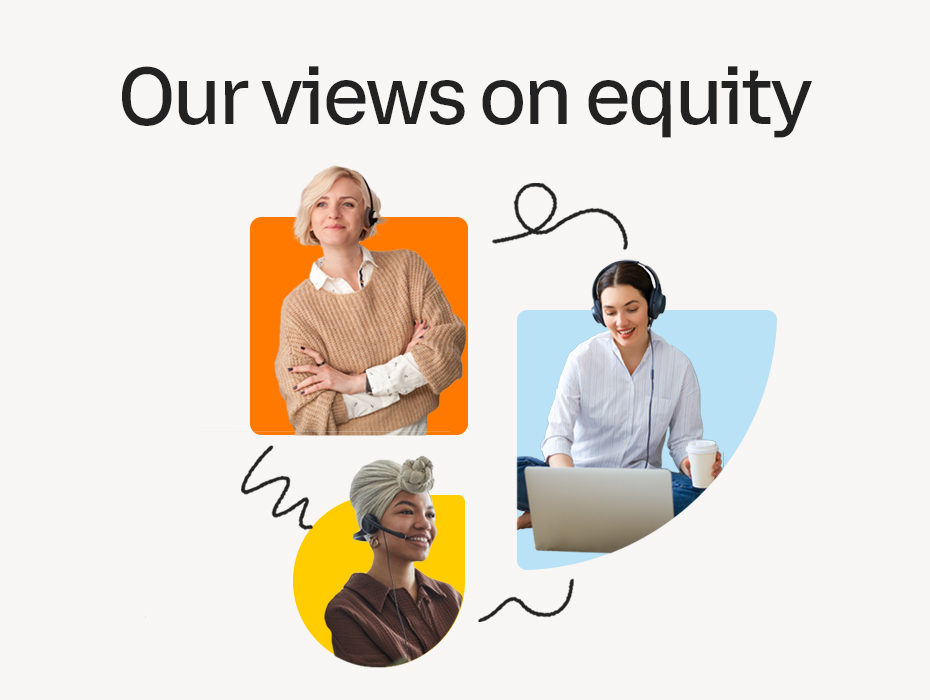‘Ask the Expert’ is a series of interviews RingCentral runs with influential thought leaders from around the world, including UC and CX consultants and analysts. In this series, we aim to find out what’s at the cutting edge of UCaaS and CCaaS.
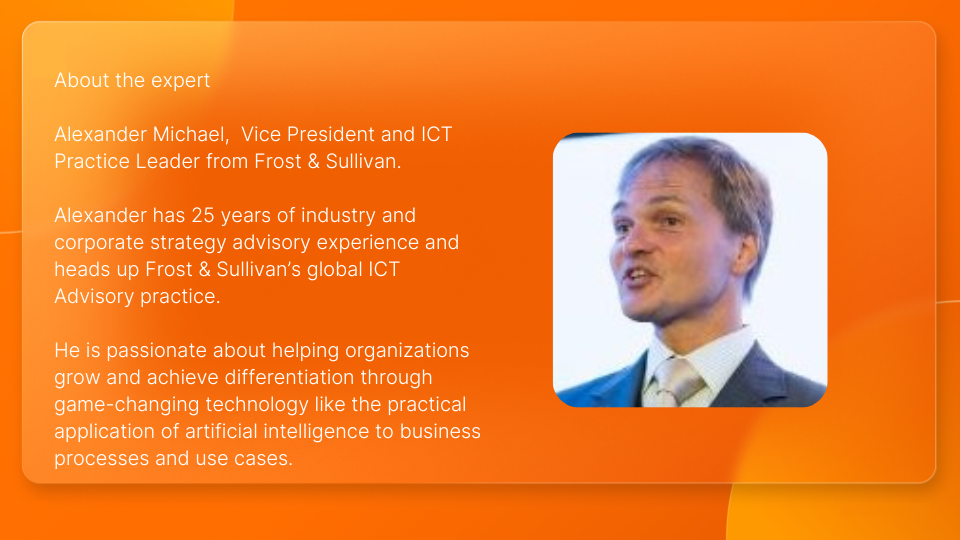
Spotlight on UC and CX convergence
For this month’s instalment, RingCentral’s Ian Nevin, Director of International Consultant Relations, spoke with Alexander Michael, Vice President and ICT Practice Leader from Frost & Sullivan. He shared his insights – including recent research carried out by Frost & Sullivan – on the UC–CX convergence market: what’s driving it and how consultants can make the most of this growing opportunity.

So, let’s dive right in to Ian’s first question:
Hi Alexander. Can you first explain what UC and CX convergence is?
Of course Ian. UC and CX convergence – also called ‘collaborative contact centre’ – means enabling front-office and back-office users to get access to the features and functionalities of each individual solution (UCaaS and CCaaS) but on a single platform.
By adopting the collaborative contact centre model, the aim is to really streamline interactions, drive efficiency, improve quality and enhance the experience – irrespective of whether the customers are internal or external.
Great, thank you. So what does the UC–CX convergence market look like at the moment and who are the key players?
The UC–CX trend is definitely gaining momentum. So far, there hasn’t been a lot of overlap between UCaaS and CCaaS vendors, but we are beginning to see a lot of movement. You have UCaaS vendors trying to add CCaaS modules and vice versa.
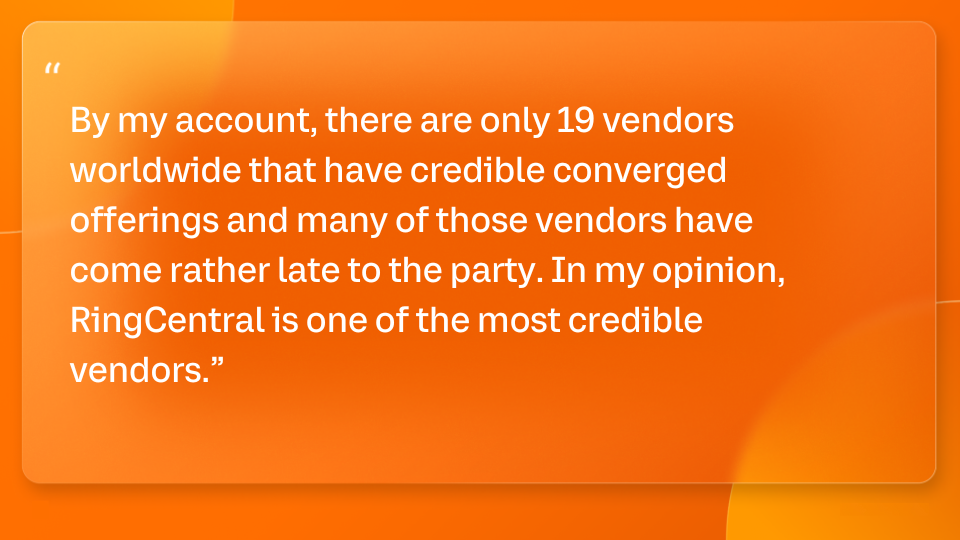
Great, that has set the scene nicely. So what would you say are the current trends that are driving the increasing convergence of UC and CX?
Digital overwhelm
A lot of companies have made substantial investments in digital channels, because digitalisation has been seen as crucial to staying competitive and relevant. But it’s not enough to just adopt digital technologies. The real challenge is harnessing the digital channels effectively to deliver a seamless and outstanding experience.
People are experiencing exhaustion and burnout due to this constant exposure to digital platforms and devices, and this can lead to reduced engagement and satisfaction. But if you integrate UC and CX, companies can provide a better experience. Employees can collaborate more efficiently, share knowledge, access real-time data – all of which contribute to the customer and employee experience.
Focus on the customer experience
We’ve observed a very big shift in priorities around the world. Whereas just a few years ago decision makers would be talking about operational costs above all else, in our 2022 survey, we’re now seeing around 70% of decision makers in both the UK and Australia say that improving the customer experience is either ‘essential’ or ‘very important’.
Even more interestingly, according to our data, just under a third of UK and Australian decision makers would now measure the result of a digital transformation project on the basis of customer satisfaction. And that’s great, right? Because digital transformation that only delivers your internal outcomes, often takes resources and attention away from the things that really matter.
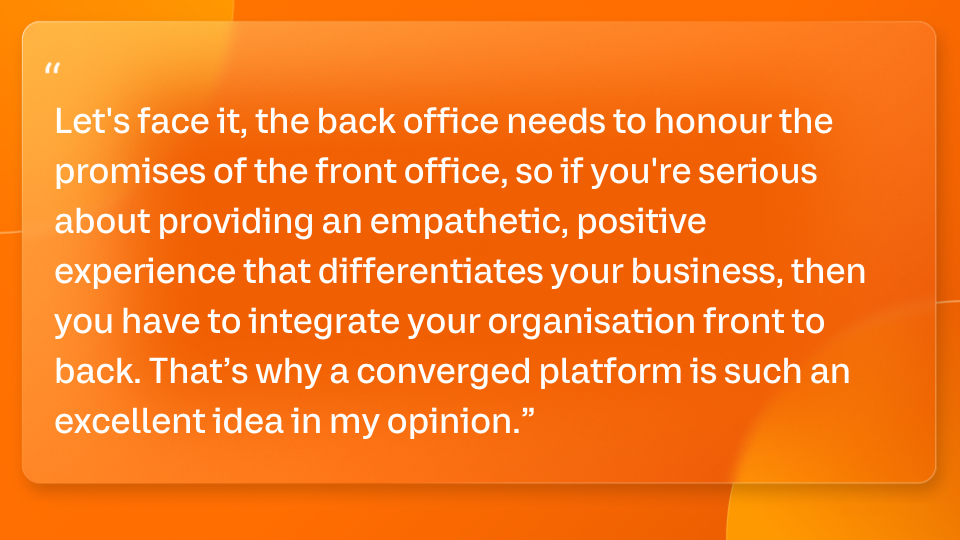
Attracting and retaining talent and hybrid work
Another big priority is attracting and retaining talent. Again, from our survey, we’re now seeing 74% of decision makers in Australia say that attracting and retaining talent is either ‘essential’ or ‘very important’. For UK decision makers it was slightly lower but still at 59% with a further 20% saying it was ‘important’. So ensuring the employee experience is good, is crucial.
Part of this is enabling the shift to hybrid work. In our 2022 data, only 6% of Australian businesses expect their complete workforce to be back in the office this year. And in other countries, that statistic is similarly low. So it’s extremely important that everyone can do their jobs effectively no matter where they find themselves, right?
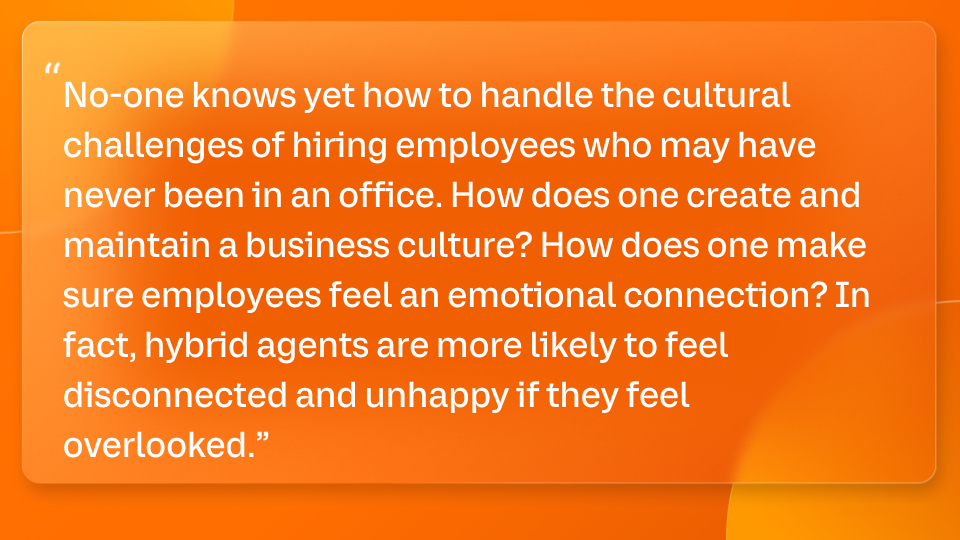
It’s obvious to me that sophisticated co-operation tools that extend to everyone, are part of the solution. And that’s another reason why the UC–CX convergence trend is proving to be very strong in 2023.
What about trends specifically related to customer experience?
Focus on agents
We’ve noticed that there has been a significant shift towards focusing on agents. We’ve always said happy employees make happy customers, but we seem to be taking it more seriously now. Companies recognise the pivotal role agents play in delivering exceptional experiences and they are investing in technologies that help agents perform better.
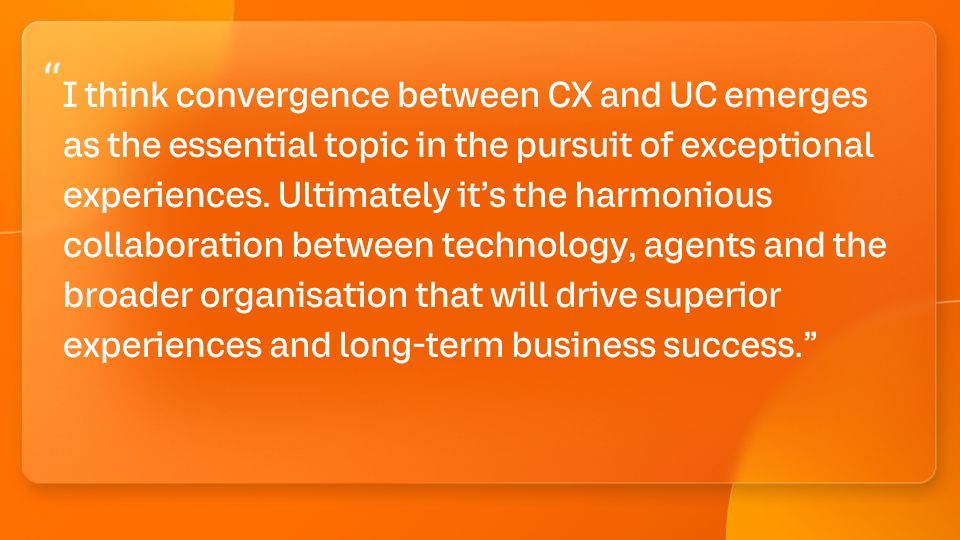
More calls and more complex enquiries
Also, perhaps somewhat counter-intuitively, contact centres are busier than ever before. With all the talk of automation and self-service, this might surprise you. However, we have data from 2021-22 that suggests there are more seats and agents than ever before.
During the same period, the use of voice as a channel also increased in 40% of Australian companies, and we see a similar trend elsewhere in the world. And if I look at the average handling times, these have increased in 42% of Australian companies. With more calls coming in that take longer to handle, it is essential that agents should be well supported, and I believe the collaborative contact centre achieves just that.
We also need to ask about the challenges around UC and CX convergence – what are they?
Yes, it’s important to cover this. Well, firstly, post-pandemic, consumers have higher demands and expectations. During the past three years, everyone has received a kind of crash-course in digital customer journeys – they know what is possible now. And that means people’s tolerance of bad experiences has reduced.
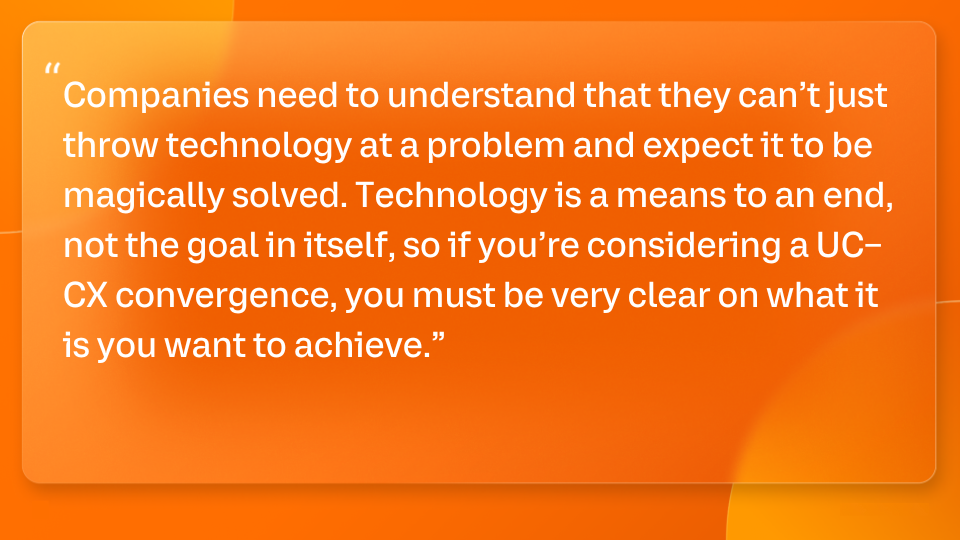
In that case, are there any organisations that wouldn’t benefit from UC and CX convergence?
We would say that it’s right for almost everyone, but there are occasions when it won’t be suitable. For example, some organisations will have very specific needs that a converged solution cannot meet, and this is especially true when companies have a lot of legacy business applications that they want to continue to use.
And of course, the advantages of the collaborative contact centre are intrinsically linked to cloud migration so any obstacles the organisation might have to the migration of business-critical applications to the cloud, would of course affect its successful implementation.
Ok, so probably one of the most important questions for our audience now: what’s the opportunity here for consultants? And how do they harness it?
Good question. So I think convergence is going to be a huge opportunity for consultants. The convergence of UC and CX is even more confusing to decision makers than either solution on its own and decision makers typically ask the wrong questions and focus on the wrong details. So there is a very important role for consultants in helping businesses achieve specific outcomes.
But aside from that, why else is this a good opportunity? Here are some of my thoughts:
- CX budgets are growing faster than UC budgets because CX tends to be a much higher priority than internal communication.
- Convergence gives a consultant access to a different circle of decision makers with greater strategic relevance to their businesses.
- They’re able to engage in much deeper conversations about business goals and the optimal technology to reach them.
- It’s an opportunity for consultants to differentiate themselves and offer something which will carry more weight with decision makers.
- It shifts business opportunities and volume towards consultants and away from integrators.
But this opportunity also comes with greater responsibility, right? So in terms of harnessing it, you need to do the following:
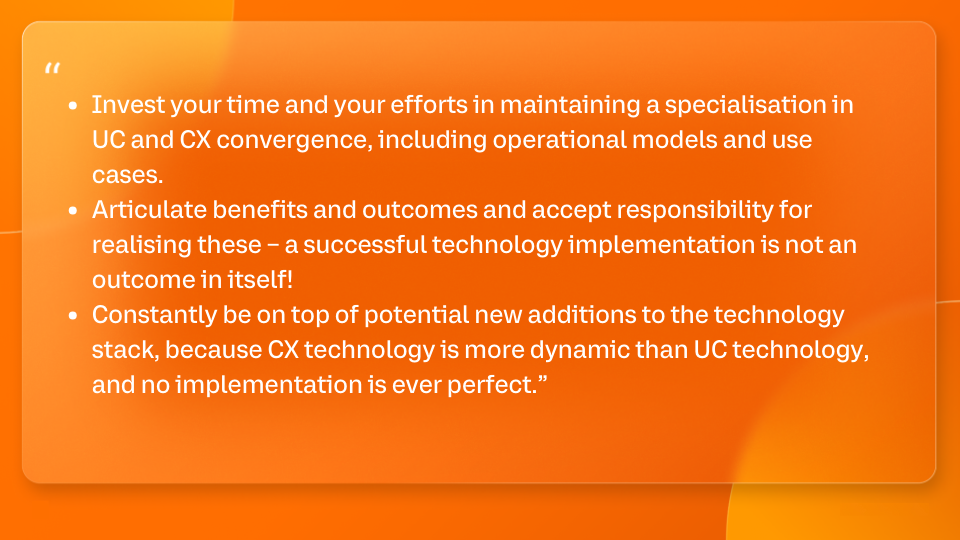
Very good points Alexander, thanks. To wrap up then, could you just summarise how organisations benefit when they converge their UC and CX platforms?
Of course. There are a lot of benefits, and it strikes me that these benefits fall into three categories: technical, practical and transformational.
The technical and practical benefits will probably receive the most attention when an organisation puts together a business case for convergence, but I would argue that the transformational benefits are the most important.
These are the benefits that change organisations into better versions of themselves, e.g. a reduction in silo thinking and encouragement of creativity.
Overall, I would say that sharing CX responsibility across the organisation – and not leaving it to be one department’s responsibility – would be key here. This is exactly the right mindset to have if you want to differentiate a business and ensure sustained growth and success.
Many thanks to Alexander Michael from Frost & Sullivan for his insights into the growth of UC–CX convergence and its future. You can find out more about the RingCentral Consultant Relations Program and portal on our hub.
Originally published 20 Sep, 2023, updated 28 Nov, 2023


